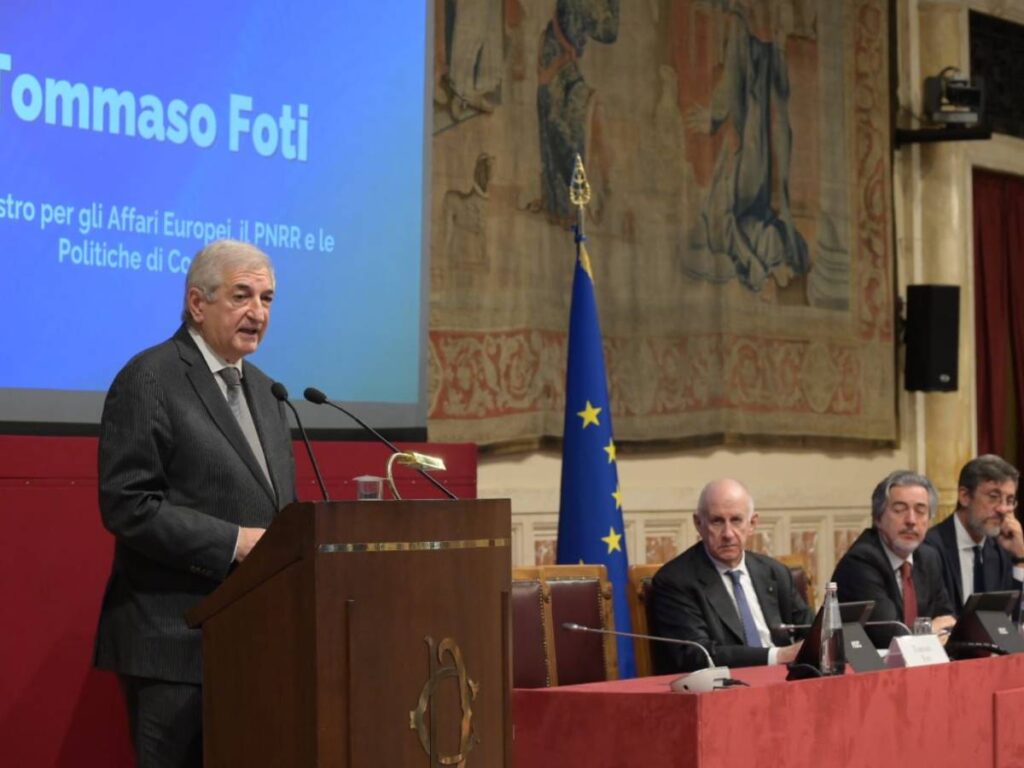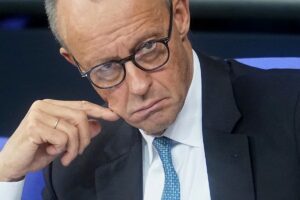
Launch an inter-ministerial worktable on hydrogen to address evolving industrial supply chains, address current critical issues, and create effective tools. It was this demand that emerged at the Italian Hydrogen Summit, an annual event promoted by H2IT, the Italian Hydrogen Association. Representatives of institutions, the productive world, experts and stakeholders in the sector gathered in the Chamber of Deputies to explore the role of hydrogen in the renewable energy panorama and its strategic value for strengthening energy security. One year after the publication of the National Hydrogen Strategy, companies are calling for a long-term vision and tools to plan structural investments, recognizing the need to strengthen industrial supply chains and production capacities.
Hydrogen supply chain, today’s projects and future developments
Hydrogen is not a product entering an existing market, but rather an entire supply chain that requires integrated and coordinated development between various areas of institutional competence. 2025 is a strategic year for the future of hydrogen in our country: companies are completing projects financed by the PNRR that will end in 2026 and starting the implementation of the IPCEI (Important Projects of Common European Interest) initiative. At the same time, private investment in renewable hydrogen production for industry and mobility is increasing. At European level, there is still a need for regulatory simplification that would allow us to speed up investments and make the market more attractive.
H2IT: Waiting too long for Tariff Decisions and the absence of clear targets, the development of this sector is disrupted
The lack of a defined timeframe and the slow implementation of the Tariff Decision, which aims to encourage renewable hydrogen production through contracts for difference, as well as the failure to amend Directive (EU) 2023/2413 (RED III) – which provides for the introduction of mandatory minimum quotas for the use of RFNBOs (Renewable Fuels of Non-Biological Origin) in industry and transport – represent elements of great concern for H2IT. These critical issues risk jeopardizing the development of the sector and the competitiveness of the national system. These steps are strategic steps to create a national hydrogen market, in line with European directives and the National Hydrogen Strategy. The absence of these provisions will slow down the entire supply chain, jeopardize the development prospects of the national hydrogen industry and the investments planned by PNRR for this sector, also reduce investor confidence and risk undoing years of cooperation between institutions and companies.
Hydrogen, MASE, MIMIT, MIT and PNRR
Therefore, it is urgent to encourage open and constructive dialogue between the competent Ministries, the industrial world and the regions. The Ministry of Environment and Energy Security (MASE) refers to the PNRR investment of around one and a half billion euros aimed at the hydrogen sector and the two fundamental regulatory instruments for the implementation of the National Hydrogen Strategy: the Tariff Decree (which incentivizes renewable hydrogen production) and the above-mentioned RED III Directive. The Italian Ministry of Business and Made (MIMIT), as part of the development of the hydrogen supply chain in Italy, has an allocation of around 2 billion euros allocated to IPCEI hydrogen. The Ministry of Infrastructure and Transport (MIT) has allocated another 600 million euros in PNRR funds for the development of road and rail hydrogen mobility. From the summit emerged the need to build equipment to support industrial demand, to encourage technology replacement with hydrogen-ready equipment in industrial sectors that are difficult to electrify and require mobility, to encourage the purchase of zero-emission vehicle fleets. The role of the Ministry of European Affairs, PNRR and cohesion policy is also important, to launch a post-PNRR strategic vision, capable of providing continuity of investment and confidence to operators in the sector. Hydrogen is Europe’s challenge, and Italy is positioning itself competitively in this scenario, so the transition towards a mature hydrogen market, capable of generating value, jobs and innovation, is essential to follow.
Regions and projects
2025 is the year the hydrogen sector will become concrete. Several regions have been able to support the business world and increase their areas to encourage supply chain development. Lombardy, for example, with its hydrogen train project, is creating a flagship project, unique even at European level, with the aim of expanding the sustainable mobility ecosystem that includes the development of refueling stations along motorways. Friuli-Venezia Giulia, on the other hand, with the North Adriatic Hydrogen Valley has created a transboundary hydrogen ecosystem, while Puglia is one of the first Regions to adopt a hydrogen strategy, in a unique panorama of renewable energy and a very strong industrial structure.
Tommaso Foti, Minister of European Affairs, PNRR and Cohesion Policy, stated: “Hydrogen is undoubtedly a strategic theme, projected into the future and capable of making a decisive contribution to the reduction of CO₂ emissions. We are in a very important phase, both in terms of research and the real application of the technology. However, we must be aware that its costs remain high, and this requires constant commitment and a long-term vision. Energy costs are destined to increase. At the moment we will not be competitive: we need a European energy strategy and implementation measures that promote technological neutrality We cannot limit ourselves to simply following the much more complex principles of reindustrialization, along with reforms such as simplification of regulations and the introduction of incentives;
Gilberto Pichetto Fratin, Minister of the Environment and Energy Security, stated: “Hydrogen is a very important topic. I thank President Dossi for today’s initiative, which has an important objective: to encourage discussions between institutions, companies and operators to put the latest developments in the sector at the center. Hydrogen is a vector that has enormous prospects and we believe hydrogen can be an important element in the energy mix of the future. For the Government, hydrogen is a fundamental pillar in the energy transition. Italy has implemented a National Strategy The hydrogen strategy supports supply chains, which need a strong market, which we must follow with new tools. We must also work to reduce production costs, we must move to prices that are in line with the market, we are still two, three, four times higher. Hydrogen must be a driving force for the valorization of national and European industry and I am sure that today’s meeting will make a very interesting contribution that will help us to adapt is the most widespread element in the world and like Italy, we can say that we also have large reserves”.
Adolfo Urso, Minister of Business and Made in Italy, underlined: “The government recognizes the strategic role of hydrogen for energy security and decarbonization for industrial sectors that do not yet have technological alternatives. Italy has an advanced supply chain, with technological skills spread throughout the value chain, from electrolysers to storage systems. We have invested in IPCEI and activated tools that mobilize more resources to support the ecological transition. The aim is to improve the national industrial ecosystem and strengthen European competitiveness through rapid and pragmatic choices. Italy is ready to lead this challenge, promoting innovation, production plants new developments and partnerships between business and research.”
Raffaele Fitto, Executive Vice President of the European Commission and European Commissioner for Regional Policy and Cohesion, stated in a video message: “This summit confirms that the topic of hydrogen is now fully at the center of the energy and industrial agenda. We are no longer talking about a developing sector, but about one of the pillars of the transition we are building. Italy has chosen to invest with determination in this direction and the national hydrogen strategy has allowed the country to position itself among the main European players in the process of innovation, decarbonization and reduction of carbon emissions. The dependence on fossil fuels continues to be a key ally. Through the program there today, we are investing a total of 5 billion euros in smart energy systems, including hydrogen: a resource that supports real projects capable of generating real impact.
Francesco Battistoni, Secretary to the Presidency of the European Council, stated: “The hydrogen industry is for Italy and Europe a fundamental pillar in the overall decarbonization strategy. As a country, we are aware of the efforts made so far and the efforts that still await us to achieve the goals of the 2030 agenda. Our main action is to gradually achieve a mix of green energy operators with sustainable costs that can help the world of Italian and European production to grow and remain competitive. In this regard, I thank Minister Pichetto Fratin for making the point an important turn in the energy supply strategy by involving in this process all the main actors of the supply chain such as H2IT, a leading company in the hydrogen sector which, I am sure, will contribute its valuable contribution in terms of knowledge and understanding to implement the ongoing energy and environmental transition more quickly”.
To Alberto Dossi, President of H2IT: “Today, Italy is building a solid and competitive hydrogen ecosystem, thanks to a skills network that covers the entire value chain. We are no longer only in the experimental phase: we are creating demand, and this is a decisive step to make hydrogen a real driver of decarbonization and energy security. Hydrogen is not an experiment, but a true industrial strategy that must be supported in technological neutrality, giving the market the possibility of choice. This is why we ask for clear and continuous tools, from the transposition of the RED III Directive into the Tariff Decision, to make hydrogen competitive renewables Without clear national goals and without continuity in funding, we risk losing projects, skills and opportunities. The world is moving forward, and Italy must keep pace, with a focus on competitiveness, technological sovereignty and industrial growth.”
Also present were: Andrea Vanner, Director of DIV IV Innovative Vectors, Ministry of Environment and Energy Security; Stefania Crotta, Director General of Financial Programs and Incentives at the Ministry of Environment and Energy Security; Adriano Ippoliti, Head of State Aid and European and International Industrial Cooperation of the Ministry of Business and Made in Italy; Carmine D’Angelo, Director General of the Directorate of Infrastructure and Public Works of the Lombardy Region; Katie
Segatti, Director of the Center for Research and Innovation Specialist Operational Unit of the Friuli Venezia Giulia Autonomous Region; Francesco Corvace, Director of Energy Services and Alternative Renewable Sources of the Puglia Region.




